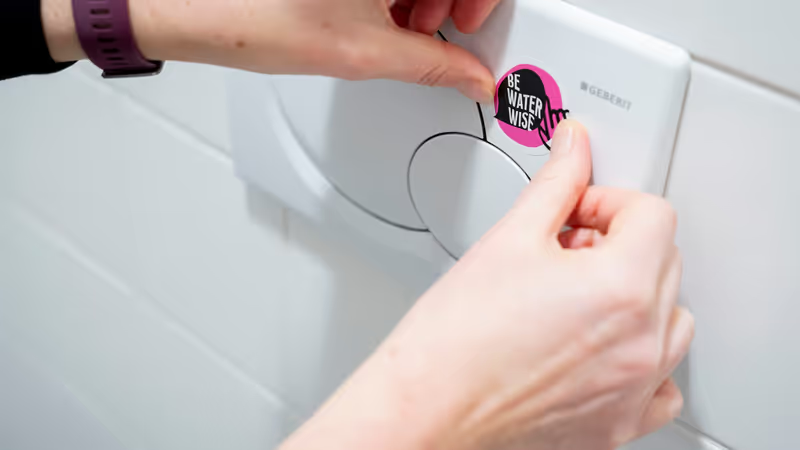The availability of drinking water in the Netherlands is under pressure. The Twente region is also facing a water shortage. This not only affects the campus, but also the broader development of Enschede and the region. The University of Twente is aware of this challenge and takes measures to reduce drinking water use on campus. In this article you can read about what UT is doing to make that happen, what we can do more - and how you yourself can save water.
The importance of water
Water is a precious and increasingly scarce resource. Not only because of the drought we are increasingly experiencing in the Netherlands, but also because of a growing water need of cities and companies. They find it more difficult to establish themselves in the Twente region due to the limited supply of water, which complicates cooperation with UT. High water consumption is also a growing cost item for UT: water company Vitens is raising the price of drinking water with 15% by 2025.
Vitens has asked large consumers like UT to reduce their water consumption by 20% by 2035 compared to the 2016-2019 period. In addition, water conservation was already part of a broader ambition to reduce our carbon footprint.
In 2024, Cynthia Nieuwpoort, a Facility Management student at Saxion University of Applied Sciences, looked at how we could reduce UT's water consumption in her thesis research. Further, in May 2024 Vitens tested on campus how to reduce drinking water use by encouraging behavioural change. In this way, we contribute to reducing the water shortage in the Twente region.
By focusing on water conservation now, UT can not only contribute to regional water needs, but also further strengthen its role as a sustainable institution. UT's goals are ambitious, but the report shows that there is great potential to achieve these goals through a combination of technical measures, improved monitoring and behavioural change.
What does UT already do?
- Using filtered water for watering sports fields: Rainwater is filtered and reused by the WaterMiracle in the Waterlab at Hogekampplein for watering sports fields.
- Dual-button toilets: The small button uses 3l for a flush and the large one uses 6l.
- Awareness among students and employees: Student Creative Technology Chiel Verstappen tested how to stimulate the behaviour to use the small button for when people go number one. Vitens has tested how stickers and information material can help to consciously use water in Bastille and the library in Vrijhof.
- Rainwater storage: In addition, site maintenance is paying close attention to storing rainwater and allowing it to slowly infiltrate into the soil so that it does not wash down to the sewer but slowly replenishes the groundwater. Read more about it on the Water theme page.
What more can we do?
The report by graduate student Cynthia Nieuwpoort shows that significant improvements can still be made, especially in the Horst and Carré where water use is quite high. This is probably due in part to water use in laboratories.
The report offers several important recommendations for further savings:
- Improved monitoring: Water use in laboratories currently cannot be monitored separately. Installing intermediate meters to distinguish between process water (water going to the labs) and drinking water would allow for better monitoring of water use and evaluation of targeted savings measures.
- Expanding rainwater storage: UT has a “clean water cellar” for storing rainwater treated by the Water Lab. Repurposing the second part of this basement can help reduce the need for potable water for irrigation and cleaning (in the summer months). The same goes for more XXL smart rain barrels.
- Water-saving nozzles: The report recommends installing water-saving nozzles on bathroom faucets. A nozzle is an aerator for a faucet where air is mixed with the water jet. This uses less water while still allowing you to wash your hands just fine.
- Behavioural change and awareness: In addition to technical measures, behavioural change is very important. Think for example not to use drinking water for cooling in laboratories, to use the small button on the toilet or to take short showers: saving water stands or falls with the behaviour of all of us. It is important to keep working on increasing awareness so that employees and students are more conscious of how they use water.
What you can do
Every drop counts. What you see in your work or study environment can be an important link in the system. We are calling on all employees to share water conservation tips at sustainability@utwente.nl. Campus & Facility Management is creating a plan on how to work toward the national goal of saving 20% water by 2035. Will you help?
Learn more
Want to know more about water at UT and specific measures being taken? Check it out on the University of Twente's sustainability website.






